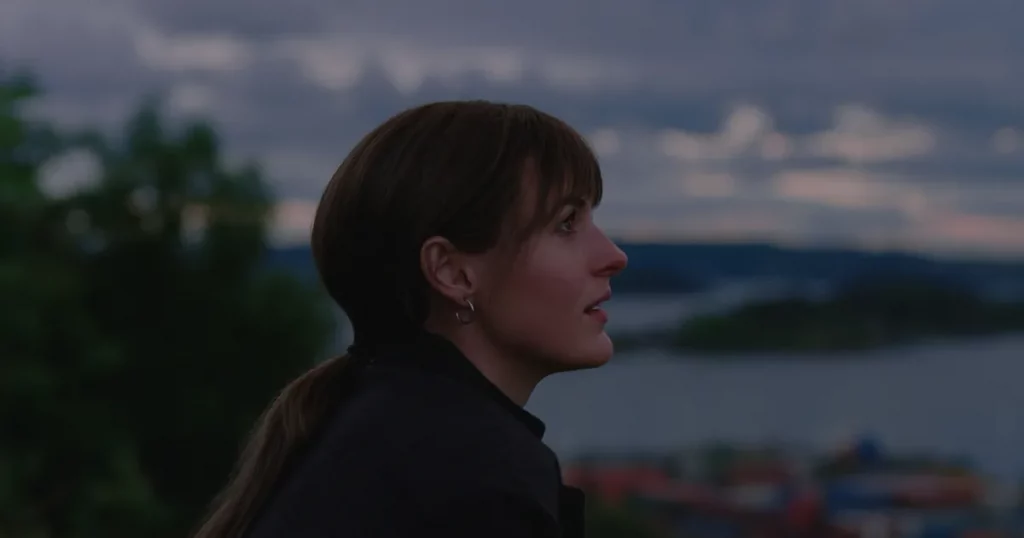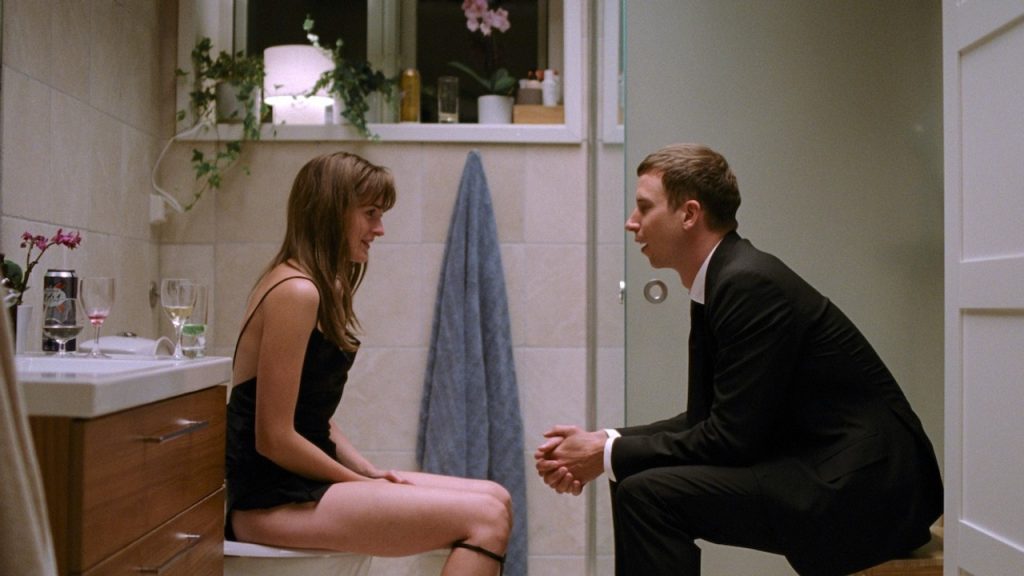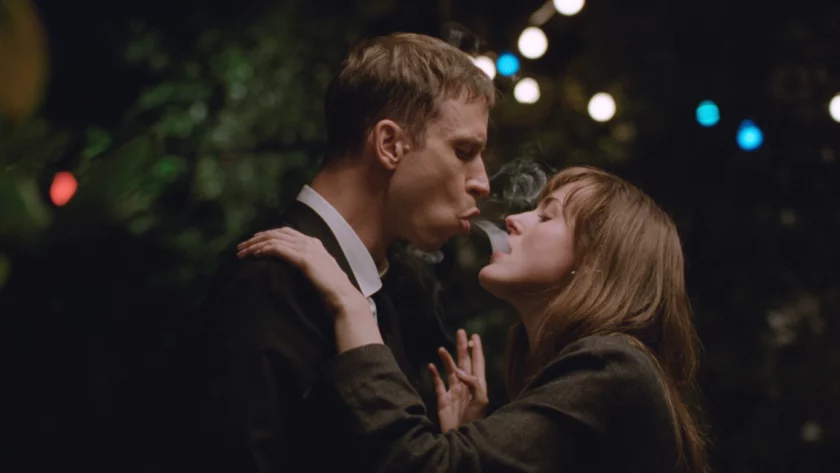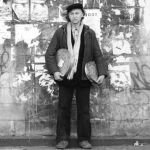Madeline Choi reviews Joachim Trier’s beautifully told story of love, confusion, and understanding.
What a title. The Worst Person in the World. Immediately, it confronts us with an image of some kind of grand, narcissistic mirage: a reflection on the self-absorbed emotional rollercoaster of those periods of life where we seem to ‘come of age’. Joachim Trier delivers precisely that through the twelve chapters of his unconventional romantic comedy, a story which pulls on the heartstrings with immense reliability.
Independent, yet flawed female protagonists have recently become somewhat of a hallmark for coming-of-age stories, with glaringly evident comparisons to be made between this story and those told by writers and directors such as Sally Rooney and Greta Gerwig. Julie (Renate Reinsve), a twenty-something year old, is introduced to the audience as a top-ranked medical student who changes her studies to psychology, suddenly hit by the realisation that she is fascinated more by the mind than the body. But of course, this doesn’t last long, as she changes her career path once again, this time to photography. Her relationships in her twenties and thirties are filled with tribulations and mistakes. This information is thrown at the audience during the film’s prologue, portraying her as flighty, indecisive, smart but without long-term conviction; how does this set up anyone to root for Julie? More than anything, I would say, it’s the immense amount of genuine humanity that Julie possesses which saves Julie; it seeps through her unlikeability, not masking it, but making us see the person behind the character, Instead of following a linear growth model and falling into the perfect coming-of-age female archetype we see so often in these types of stories, Julie takes steps both forwards and back as she fails to combat all the conflicts thrown at her.
“I feel like a spectator in my own life”, she confesses, exiting her first long-term relationship.

Julie, who never really knew what she wanted out of life from the start, navigates heartbreak, grief, and solitude all the while hoping to find her own pace in life. Narcissistically regarding herself as ‘the worst person in the world’, she displays selfishness in times of romantic turbulence but comes back with immense love in times of loss. Nothing about her character is one-note. Anchored with the societal expectations set out by her relationships, the prospect of motherhood looms over the romantic connections she shares with the men in her life, a potential that riddles her with anxiety and self-doubt. Throughout her twenties and thirties, we see Julie act on impulse as a means of dealing with her dissatisfaction with her life, hastily shifting from one career path to another and from one relationship to another. Time is always ticking for her. However, the film refreshingly presents motherhood separate from her life choices such as her goal for a fulfilling career. Motherhood is simply a possibility. But a possibility that is too far and closed off for Julie. The climax of Julie’s empowerment and coming of age is tied with her rejection of this possibility: for the first time, we see Julie make choices for herself instead of the life she expects for herself.
Julie’s life decisions ostensibly depend on those of her boyfriends, but the film never categorises her as a ‘girlfriend’ or ‘potential mother’. The film stays with her, firmly placing her as subject, the camera and script never stray away from Julie’s identity as Julie. The film’s highlight, undoubtedly then, is Renate Reinsve’s performance. It is my favourite of the year. Reinsve holds a captivating ability to play out specific emotions in such a raw, personal manner that they feel practically universal, making it impossible not to see at least a glimpse of yourself in Julie.
So, the focus of The Worst Person in the World is on a young woman who struggles with her career, relationships, and other aspects of everyday life. The audience may roll their eyes everytime she flits from one lover to another or reconsiders her career decisions on a whim. But surely, these universal struggles don’t deserve to label a person with the title of ‘Worst Person in the World’- right? Like Julie, whose decisions sometimes lie in a rather morally grey area, we are quick to jump and label ourselves as horrible people. We are always our own harshest critics. From a young age, we are taught what is ‘good’ and ‘bad’, and everything in between this black and white seems to almost always lean towards ‘bad’. It is with this that a big part of maturity stems from a realisation of our mistakes and in accepting that perhaps, it’s okay to make stupid mistakes at a young age- because everyone does.

Thinking about this film after my initial watch, three things come immediately to mind: Renate Reinsve’s performance, of course, but two specific sequences as well. The first sees Julie running from her current lover to her new fling through an Oslo frozen in time. Strangely enough, this rather magical idea of frozen time is what felt the most real and grounded for me. The beautiful cinematography conveys love in a way that feels true and honest above all else. Something about seeing Julie running through the streets of Oslo to kiss her would-be lover feels like an extended look into her mind. Her selfish desire to leave one man for another is played as a romantic musical number in her head, but the audience still roots for her as she begins to outgrow her first long-term relationship. How could they not? The second sequence I think of is a psychedelic trip after Julie takes shrooms with her boyfriend and his friends. A chaotic blend of the presentation of Julie’s heightened anxiety with striking animation, this sequence undermines the romantic musical sequence mentioned previously, confirming her greatest fear: emotional commitment. With the absence of a father figure, it’s clear that Julie has experienced some sort of emotional hindrance when it comes to fully loving someone. Like this, Julie is back at square zero after two long-term relationships. These two sequences, although polar opposites in terms of their visuals and mood, serve as turning points for the film as Julie makes life altering decisions. Like her characterisation, the visuals are never one-note. The two hour runtime is paced seamlessly, Trier and cinematographer Kasper Tuxen playing effortlessly with different styles of visual storytelling.
Although the film is divided into twelve segments with a prologue and epilogue, Julie’s coming-of-age has hardly finished by the film’s end. The narrative ties off with her mid-adulthood, her life still bombarded by beginnings and endings. Nothing seems to go along a set timeline in Julie’s life, the film writing itself as a love-letter to individuality over conformity. Like Julie, none of us are main characters in these bigger than life scenarios, but we are in charge of our own plots of life as we navigate through our individual ups and downs. And similar to Julie, we may consider ourselves as particularly notable individuals, perhaps not going so far as to call ourselves ‘the worst person in the world’, but focusing obsessively on our flaws nonetheless. Ultimately, the film serves as a reminder of our place as one out of seven billion individuals. Something about this is reassuring, our problems and mistakes seeming less impactful in the grand scheme of things. And just like this, this film confirms the power of visual storytelling.
The Worst Person in the World will be released in UK cinemas on March 25th 2022. You can watch the trailer here:




